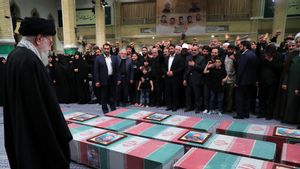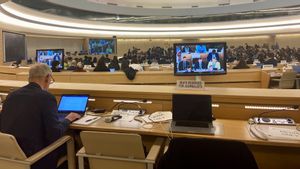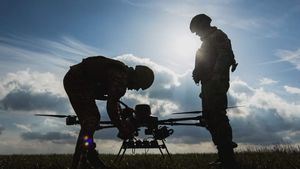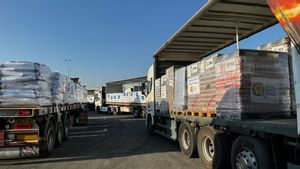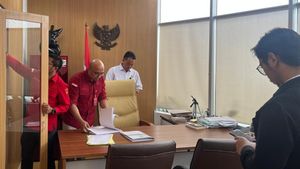JAKARTA - Climate change and increased sea traffic have caused Mediterranean cockatoos along with about 50 other new species to have spread to the Adriatic Sea, threatening the native fish population.
For decades, Croatian fisherman Marko Kristic has spread his net in the sparkling waters of the Adriatic Sea. Now, the invasion of Mediterranean cockatoos is endangering the traditional catch and its livelihoods, he said.
Kristic said that cockatoos were first seen in southern Adriatic about 15 years ago. However, it is now a common side catch in the net.
Although enjoyed as delicious food in their home area, the cocoa fish is not liked by local residents around their village, Molunat in southern Croatia.
"I can't sell it to anyone. Locals won't be eating these new fish," Kristic said, quoted by Reuters on April 1.
Meanwhile, researchers at the Institute of Marine and Coastal Research based in Dubrovnik Nenad Antolovic said fish stocks in the Adriatic Sea, the northernmost part of the Mediterranean, had slumped due to overfishing, climate change, and invasion of new species.
"The Adriatic diet is changing, getting hotter. Because of that, new organisms have sprung up. What I mean are fish, facilitation and alga," said Antolovic.
According to data from 2023 of the Italian National Agency for New Technology, Energy and Sustainable Economic Development (ENEA), the Mediterranean is the sea with the fastest warming on the planet.
The new fish species have arrived in the Mediterranean and the Adriatic Sea from the Red Sea via the Suez Canal due to warmer waters or being carried away in the ship's weighing tanks, thereby endangering the survival of some 460 native fish species, Antolovic said.
Some new fish are harmful to humans, such as lionfish or poisonous stonefish.
Last month, a fisherman from the Dubrovnik area caught a small square-tailed fish, a resident of the deep sea, which is rarely found in the Adriatic Sea.
In neighboring Montenegro, scientists from the Institute of Marine Biology in the dirty coastal city chose the blue crab as an example of an invasive species.
"He appeared about 20 years ago and is one of the worst invasive species in the Mediterranean," said scientist Olivera Markovic.
Fishermen and scientists say the stock of crustaceans such as green crabs has decreased, and in some places are completely extinct.
SEE ALSO:
"The population of green crabs has drastically decreased since the appearance of blue crabs," said Markovic.
On the other hand, baronang fish, lobster and lynfish thrive in warmer Adriatic waters along the Montenegro coast, said Ilija Cetkovic, a researcher at the institute.
The biggest concern is lionfish.
"(Lionfish) is currently a fire problem. These fish are predators and cause major damage to the ecosystem," Cetkovic said.
The English, Chinese, Japanese, Arabic, and French versions are automatically generated by the AI. So there may still be inaccuracies in translating, please always see Indonesian as our main language. (system supported by DigitalSiber.id)



